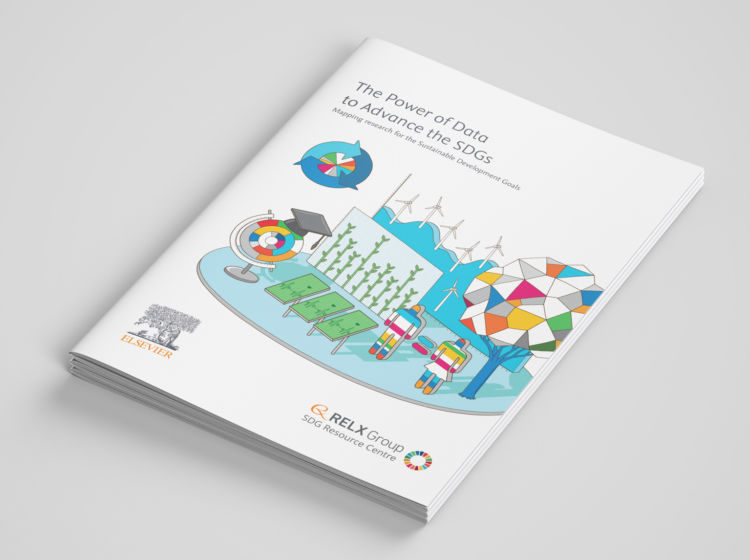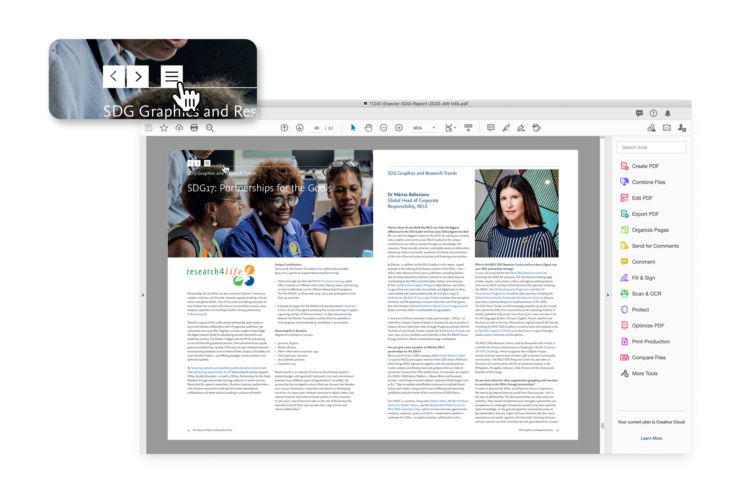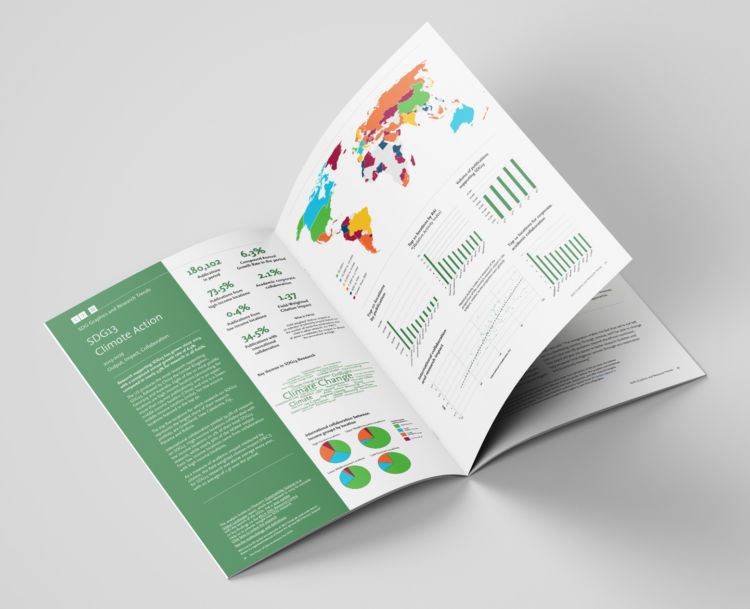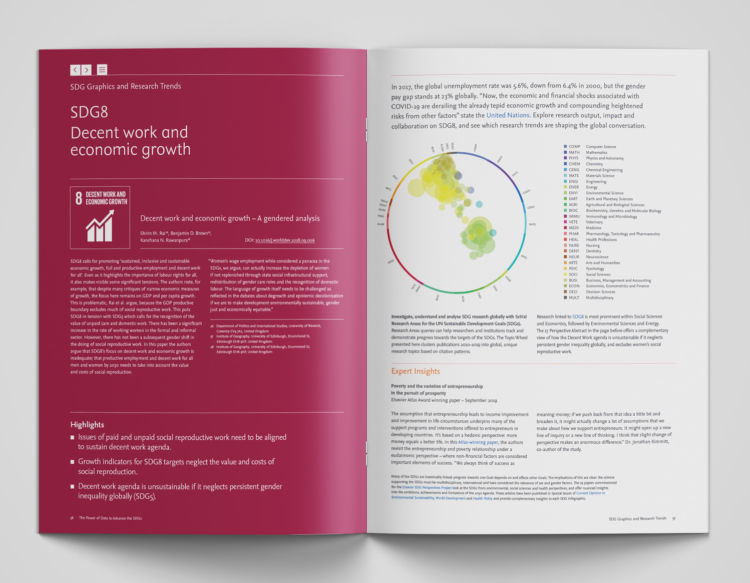In 2015, the United Nations Sustainable Development Goals (SDGs) set an ambitious target to achieve a sustainable and fair future for our planet by 2030. Elsevier has published The Power of Research to Advance the SDGs to strengthen the understanding of the global SDG efforts and to share its insights in content, data and analytics to help achieve the 2030 goals.
Knowing that important decisions can be made using the contents of this report, it was paramount that tothepoint conveyed the expert insights and data in an easy-to-digest manner for each of the 17 SDGs. An added complexity was that the separate project we have been doing for RELX each year – a data sheet of infographics for their interpretations of the SDGs, had to be incorporated into the Elsevier report. RELX is Elsevier’s holding company, but the two businesses have separate brands and typography. Our proposal was to adapt these RELX sheets so that when separate, they followed the RELX styling, but when incorporated in the report, we adapted them to sit more comfortably with the Elsevier style. This was achieved with close collaboration between the two teams who both saw the value of this approach, which allowed for brand flexibility, and the results speak for themselves.
The United Nations SDGs themselves have a very strong and distinguishable brand identity, making great use of simple iconography and vibrant colours to represent each SDG, something that we wanted to leverage by featuring these and the colours throughout the report. This also helped the Elsevier and RELX elements of the report sit together. Working closely with the Elsevier marketing team to ensure the report we developed was on brand, we created a master template to help with future publications that mix Elservier and RELX content.
We also discussed the use of their illustrator, who does the majority of their report covers, and how this could be incorporated into our work. They commissioned an illustration that covered the four focus SDGs of the report, and from the outline sketches we showed how we could incorporate this, not only on the cover, but throughout the report. We toned it with the relevant SDG colours for divider pages to change the pace of this large 100-page document and to stay in keeping with the colour theme. We wanted the report to have a very clear reader journey with bold use of colour and clear typography, without detracting from the data, insights and some of the fabulous visualisations.
At the heart of the report, were the infographics for the SDGs – a joint collaboration between RELX and Elsevier. Although produced by RELX to show key metrics for research output, collaboration and impact, these infographics and the data they contain are instrumental in showing the pivotal role that research plays in achieving the SDGs. We used the respective SDG colours for their infographic pages which acted as a tool to both help differentiate and identify the SDGs. Working closely with RELX, we ensured the data and key stats on the page were immediately noticeable and quick to digest.
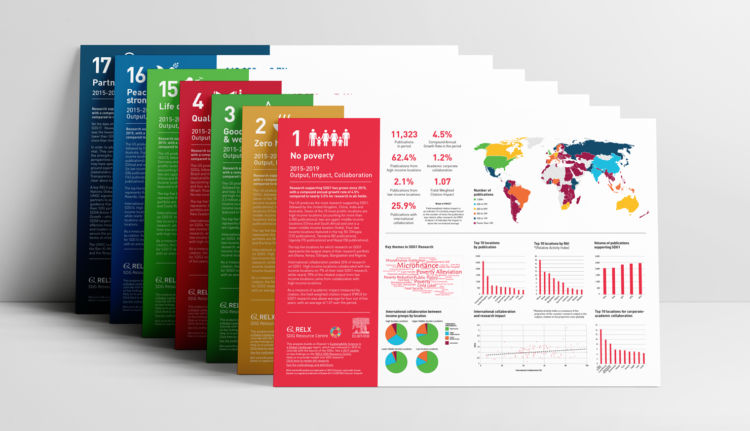
With conferences having been all but cancelled in 2020, the need for printed materials has greatly fallen. Digital materials are now a necessary feature of the new ways of working, which in reality, is a better alternative in many situations. For Elsevier, we were able to introduce a more interactive format to the design of the report than just having the standard PDF. Each page had a navigation feature top right that allowed the reader with one click to jump forwards and backwards or be redirected back to the interactive contents page. The contents page also allows one to click to specific sections – a handy set of features for a 100-page report! Each page typically contains numerous embedded links as well, which allow the reader to click through to a web-page containing more information should they wish to learn more. The click-through rate can then be tracked to monitor engagement which helps to gauge levels of interest in the report, what is of interest and what is not.
This project was a new but welcome challenge for the team, in that all design work and correspondence – aspects of a project which typically benefit greatly from face-to-face interaction/collaboration – had to be done whilst working from home in the midst of a pandemic. The team certainly rose to the occasion though, and our clients we’re absolutely delighted both with how smoothly the project went, as well as how the finished report turned out.
The report was launched at the end of September and Ylann Schemm, Director of the Elsevier Foundation, noted:
“Just wanted to share the proud moment and give you a huge thanks from us for the excellent job you did on the SDG report! The report has been very well received”.Further information can be found here:
